~ What are modern day amulets that you can think of?
~ Why do people wear / use them?
~ Just as with possessions, amulets are a universal phenomena. Many are sold to this day. Here's a link to such a store:
https://beadsofparadisenyc.com/collections/talismanic-art-artifacts
~ And here are links where you can order your own, handwritten Jewish amulet:
https://www.kabalatalisman.com/
https://gershnubirg.com/
There is the idea that anything that people put on their bodies were, initially, amulets - and that is how several invectives against rings and necklaces found in the Prophets, particularly Isaiah and Ezekiel, are read by many.
Be as it may, the oldest unabashedly Jewish amulet found by archeologists are the Ketef Hinnom Scrolls.
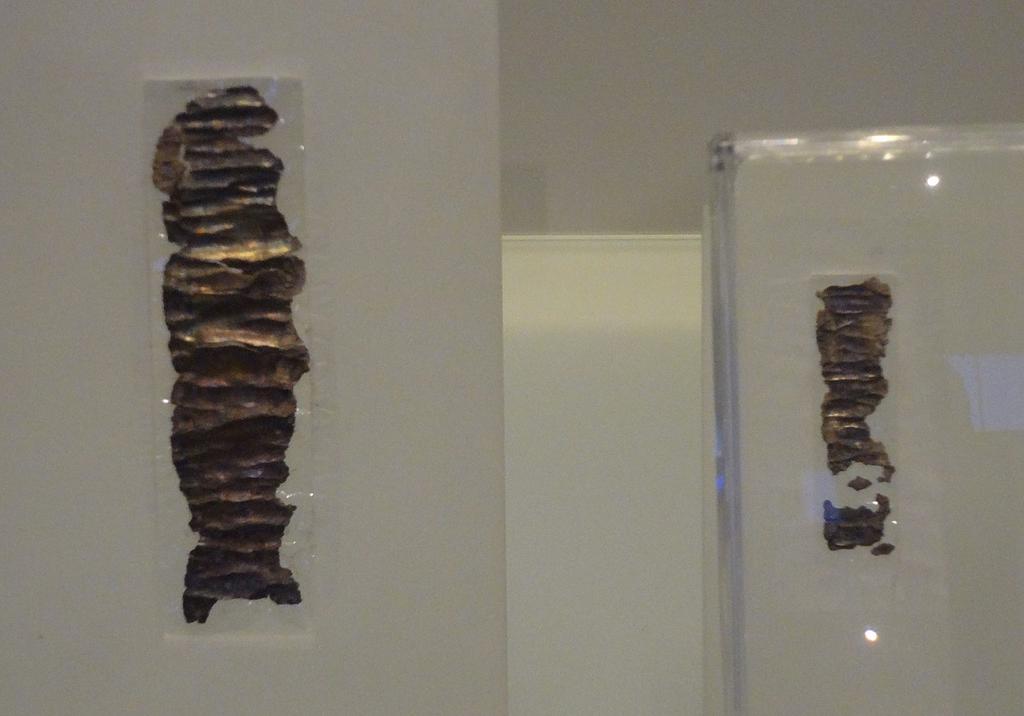
~ The two silver scrolls were uncovered in 1979 at Ketef Hinnom, an archaeological site southwest of the Old City of Jerusalem, and were found to contain a variation of the Priestly Blessing, found in Numbers 6:24–26. The scrolls were dated paleographically to the late 7th or early 6th century BCE, placing them in the First Temple period.
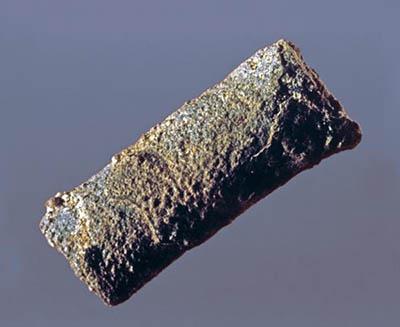
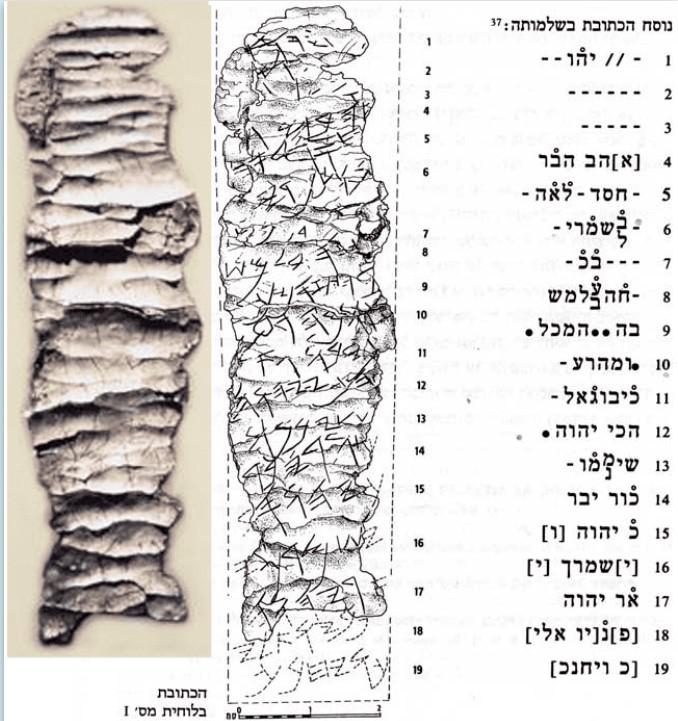
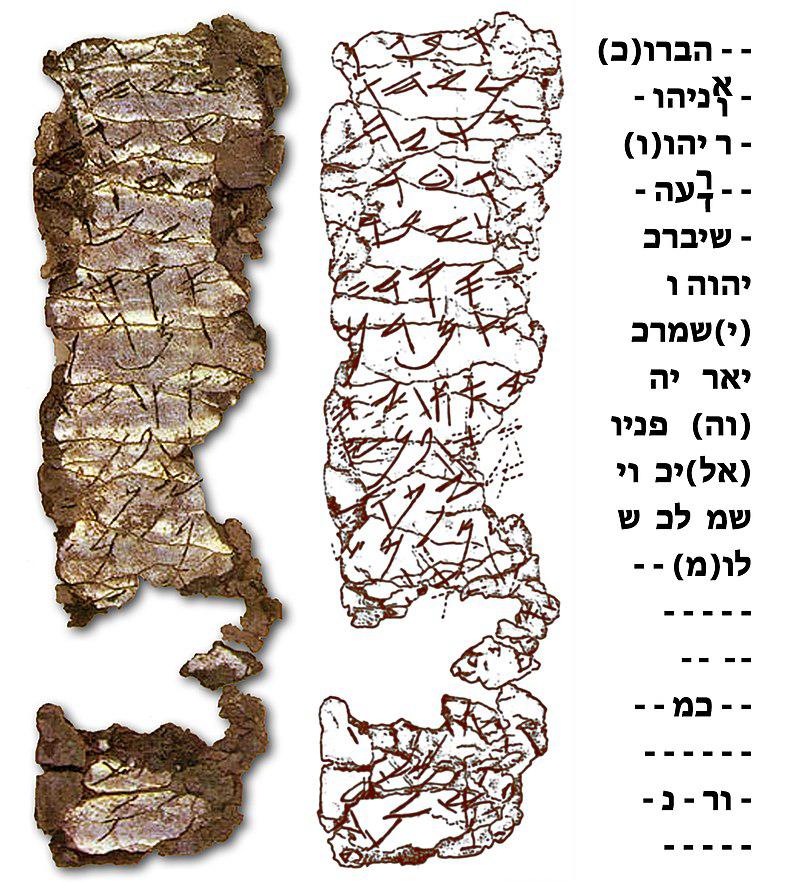
~ Amulet 1 was 1 inch in height and 0.4 inches in diameter; unrolled, the scroll measures 3.8 inches in height and 1 inch in width. Amulet 2 was 0.5 inches in height and 0.2 inches in diameter; unrolled, the scroll has a height of 1.5 inches and a width of 0.4 inches. The second scroll contains about 100 words arranged in 12 lines of text—thus, the person who inscribed the text was able to fit all of that onto a silver sheet the length of a match stick.
More at: https://www.biblicalarchaeology.org/daily/biblical-artifacts/inscriptions/miniature-writing-ancient-amulets-ketef-hinnom/
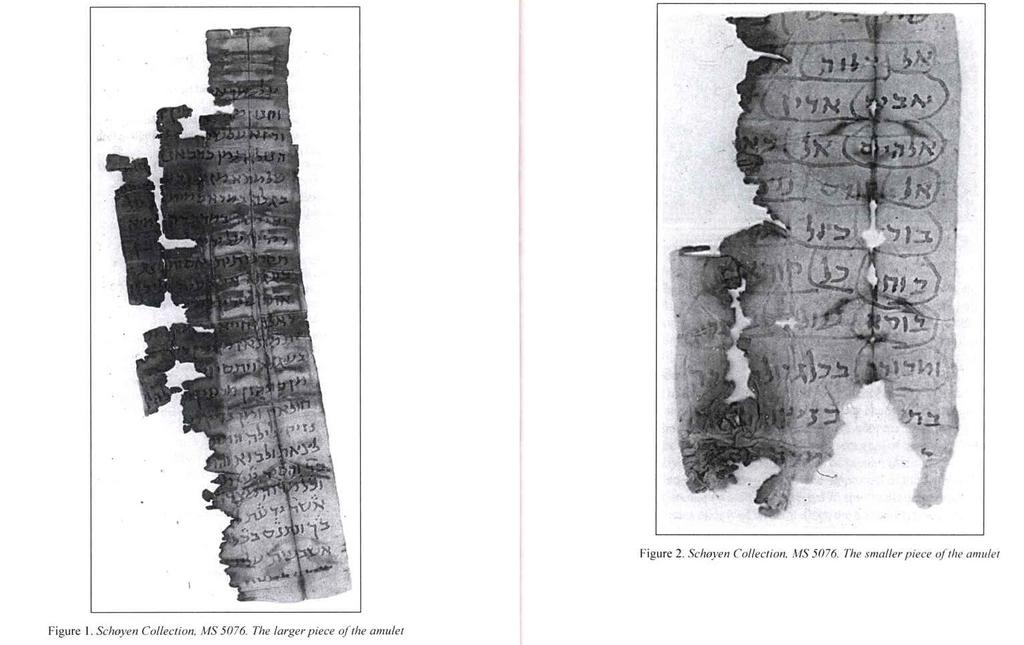

~ This amulet was written in two small but long pieces of paper around year 1000 CE, reportedly from Afghanistan. The cylinder containing it is made of copper, 15 cm of length and 3.8 cm of diameter [near 6 and 1.5 in inches]. The entire strip of paper, unfurled, measures 30 cm. Because it is written in paper, it cannot be older than the 8th century, since this is when paper was available in that area. The amulet was written to protect Mahnaz "noledet/born from" Kadbanu from the evil eye and other ailments. There is the possibility that the client is not Jewish, however, Shaked affirms that women, particularly, cold carry Persian names. Both names are feminine - just as the prayer for the sick. The writer apparently knew a formula in Aramaic, but was not able to adapt it for women correctly.
~ Professor Shaul Shaked published it in With Wisdom as a Robe, a monograph collection published by Sheffield Phoenix Press in 2008 in honor of Professor Ida Fröhlich.
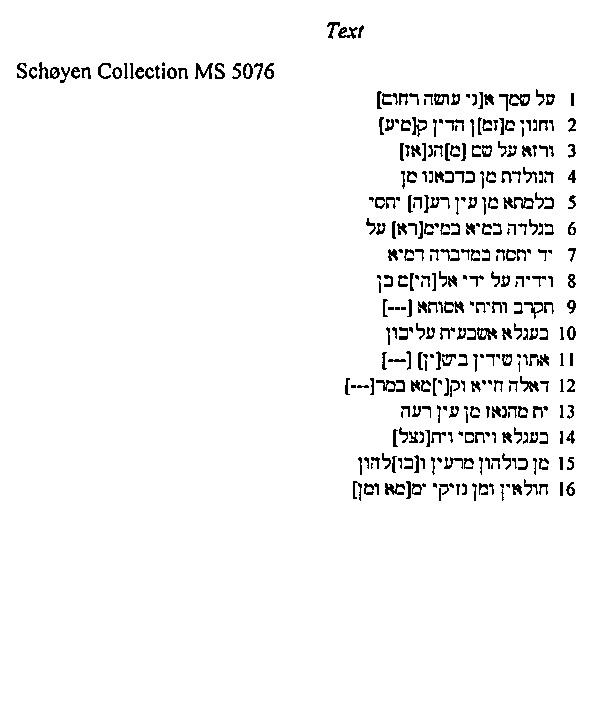
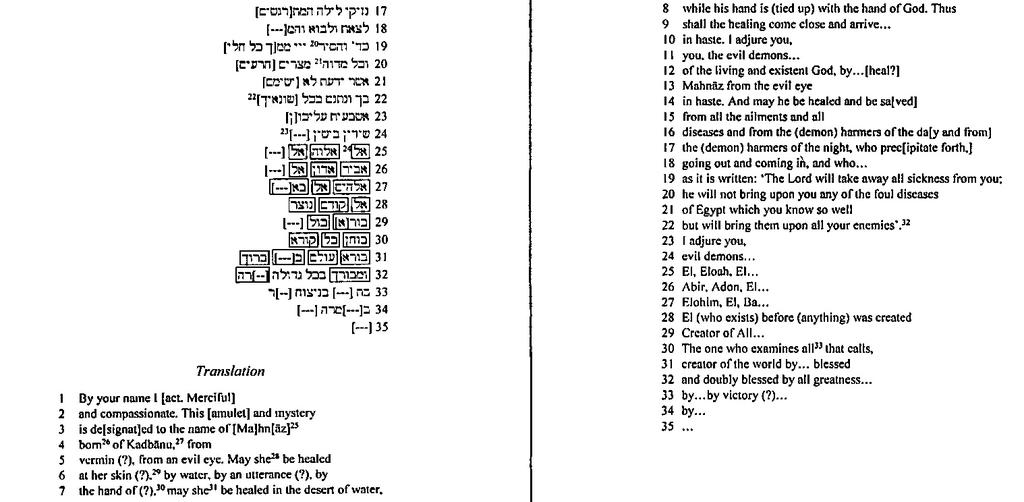
(ב) לא יצא האיש בסנדל המסמר, ולא ביחיד בזמן שאין ברגלו מכה, ולא בתפלין, ולא בקמיע בזמן שאינו מן הממחה, ולא בשריון, ולא בקסדא, ולא במגפים. ואם יצא, אינו חיב חטאת.
(2) A man may not go out with nail-studded sandals, nor with a single [sandal] unless he has a wound on [the other] foot. A [man may not go out] with Tefillin; nor with an amulet unless it [was written] by an expert; nor with a cuirass, nor with a helmet, nor with greaves. If one has gone out [with any of these] he is not liable for a Chattat.
(ג) עור - כדי לעשות קמיע. קלף - כדי לכתב עליו פרשה קטנה שבתפלין, שהיא שמע ישראל. דיו - כדי לכתב שתי אותיות. כחול - כדי לכחל עין אחת.
(3) [One is liable if he carries out] sufficient leather to make an amulet; sufficient parchment to write thereon the smallest section of Tefillin which is Shema Yisrael; or sufficient ink to write two letters; or sufficient paint to color one eye.
וְלֹא בְּקָמֵיעַ בִּזְמַן שֶׁאֵינוֹ מִן הַמּוּמְחֶה. אָמַר רַב פָּפָּא: לָא תֵּימָא עַד דְּמוּמְחֶה גַּבְרָא וּמוּמְחֶה קָמֵיעַ, אֶלָּא כֵּיוָן דְּמוּמְחֶה גַּבְרָא, אַף עַל גַּב דְּלָא מוּמְחֶה קָמֵיעַ. דַּיְקָא נָמֵי, דְּקָתָנֵי: ״וְלֹא בְּקָמֵיעַ בִּזְמַן שֶׁאֵינוֹ מִן הַמּוּמְחֶה״, וְלָא קָתָנֵי: ״בִּזְמַן שֶׁאֵינוֹ מוּמְחֶה״. שְׁמַע מִינַּהּ. תָּנוּ רַבָּנַן: אֵיזֶהוּ קָמֵיעַ מוּמְחֶה — כֹּל שֶׁרִיפֵּא, וְשָׁנָה, וְשִׁלֵּשׁ. אֶחָד קָמֵיעַ שֶׁל כְּתָב וְאֶחָד קָמֵיעַ שֶׁל עִיקָּרִין, אֶחָד חוֹלֶה שֶׁיֵּשׁ בּוֹ סַכָּנָה וְאֶחָד חוֹלֶה שֶׁאֵין בּוֹ סַכָּנָה. לֹא שֶׁנִּכְפָּה, אֶלָּא שֶׁלֹּא יִכָּפֶה. וְקוֹשֵׁר וּמַתִּיר אֲפִילּוּ בִּרְשׁוּת הָרַבִּים. וּבִלְבַד שֶׁלֹּא יִקְשְׁרֶנּוּ בְּשֵׁיר וּבְטַבַּעַת וְיֵצֵא בּוֹ בִּרְשׁוּת הָרַבִּים. מִשּׁוּם מַרְאִית הָעַיִן.
We learned in the mishna: Nor with an amulet when it is not from an expert. Rav Pappa said: Do not say that the meaning of the mishna is that one may only go out with an amulet if the person who wrote it is an expert and the amulet has proven effective. Rather, if the person who wrote it is an expert, even though the amulet has not proven effective, he may go out with it. The Gemara comments: The language of the mishna is also precise, as it teaches: Nor with an amulet when it is not from an expert, and it does not teach: When the amulet is not effective. Apparently, it is sufficient if the writer of the amulet is an expert, even if the effectiveness of the amulet has not been proven. The Gemara comments: Indeed, learn from it. The Sages taught in the Tosefta: What is an effective amulet? It is any amulet that healed one person once, and healed him again, and healed him a third time. That is the criterion for an effective amulet, and it applies to both a written amulet and an amulet of herbal roots; both if it has proven effective in healing a sick person who is dangerously ill, and if it has proven effective in healing a sick person who is not dangerously ill. It is permitted to go out with these types of amulets on Shabbat. And an amulet was not only permitted in a case where one has already fallen due to epilepsy and wears the amulet in order to prevent an additional fall. Rather, even if one has never fallen, and he wears the amulet so that he will not contract the illness and fall, he is permitted to go out with it on Shabbat is permitted. And he may tie and untie it even in the public domain, as long as he does not tie it to a bracelet or a ring and go out with it into the public domain. The reason for the prohibition is due to the appearance of transgression, as, in that case, it appears that he is wearing the amulet strictly for ornamental purposes, which is prohibited.
~ Why can you carry amulets on Shabbat? What are the limits set on the amulets on Shabbat?
~ The placebo effect is not to be forgotten, as well as the fact that there are different types of rabies viruses with different outcomes.
https://www.medicalnewstoday.com/articles/306437
https://www.cdc.gov/rabies/symptoms/index.html


~ There is a request by the writer to be helped so that Mordechai bar Moro be saved from the evil eye in every place, and from fear, and hatred, and destruction, and evil spirits, and forces of impurity, [and give him] success and protection.
~ Rabbi Benjamin Naar, “Rabbi Benjamin Naar's kame'a ,” Exploring Sephardic Life Cycle Customs, accessed May 17, 2023, http://jewishstudies.washington.edu/omeka/items/show/50. Origin: Salonika, 20th century.
~ We saw that the word amulet, kemayah, has a much larger use than just personal items that are carried by someone.
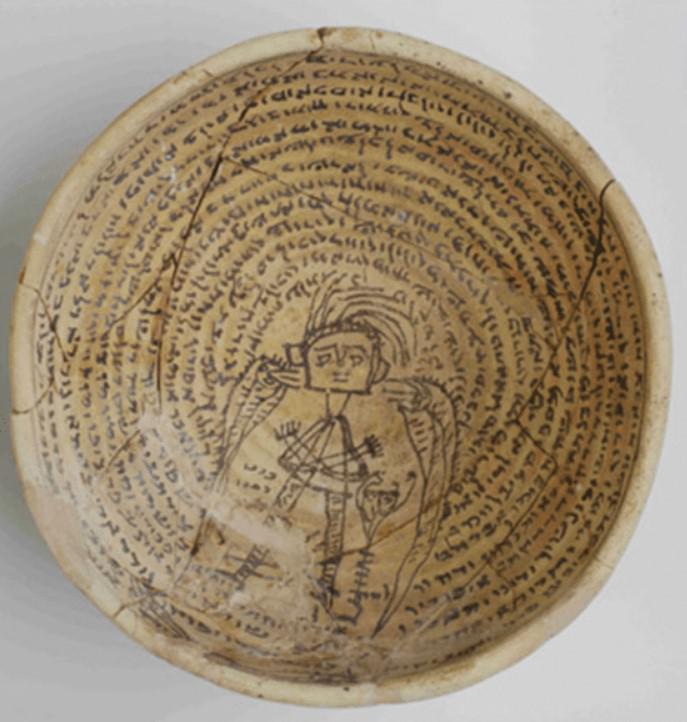
In this incantation bowl, the angel Sarfiel is being called to send away two demons from the house of Kafnay ben Ayma and his wife, Aymay bat Anay. The image in the center is of a shed, with empty eyes, disheveled hair, arms crossed and legs bound by chains. Three demonic figures surround it, with a smaller one having its arms raised in a position of surrender.
source: https://blog.nli.org.il/incantation_bowl/
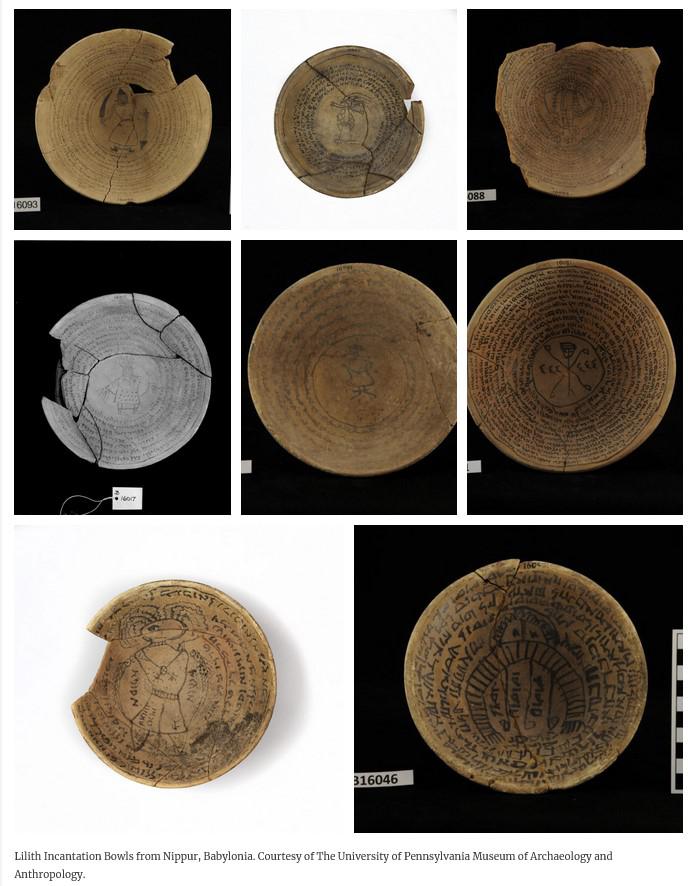
(1) לכל (2) ל (3) ליליתא בישתא
(4) דפורא רמינא ושקילנא (5) {ועב} ועבדי עבדנא במתיבי (6) יהושע בר פרחיה
כתבית (7) גיטא דיכרי וניקבתא משמתא מלויתא דלויא ושריא ודירא בביתיה דארדוי בר (8) כירכשידוך וכל שום דאית לה דמית(חזיא) להון בחילמא דליליה ובשינתא דיממא ואנה כתיבנא עליכון גיטא (9) גיט פיטורין ושבוקין
בשום אות מיתוך אות אותיות מיתוך אותיות ושום {מ} מיתוך השימ<ו>ת וינקבי מיתוך האל הגולי דיבהון יתכ<נ>עו (10) שמיה וארעה וטורא בהון ויתעקרון ורמיתא בהון ויתמסרון שידי וחרשי בהון עברי מן עלמא
בכין סליקית עליכון למירומא מיחבלא (11) לאפוקי ולאנדויאהון שידין ושיבטין ודיוין וסטנין וחילמי סניתי שגישי
ותיזחון ותיפקון מן ביתיה ואיסקופתיה דארדוי בר כירכשידוך (12) ולא תתחזון להון לא בחילמא דליליה ולא בשינתא ┐ד┌<יממה> מיטול דפטרנא יתיכון מיניכון בסיפר תירוכי<ן> וגיטא גיט פיטורין ואיגרת שבוקין כדת משה ו<י>שראל
(13) לשמך אני עשיתי גבריאל (14) verso גבריאל ו(מיכ)אל ורפיאל ואור<יאל> …..יאל בשום (סו)ריאל סוריאל …… יהוק יהיק רבה סלה
ויאמר יי אל שטן יגער יי בך (15) השטן יגער יי בך הבוחיר בירושלים הלא זה אוד (מוצל) מיאש
Jewish Aramaic Incantation Bowl, M59; Text transcribed and translated by Prof. Dan Levene (Jewish Aramaic Incantation Bowls – Jewish/non-Jewish Relations (ed.ac.uk)
(1) For all, (2) for (3) evil Liliths (4) that I am casting and drawing a lot (5) and I made a (magical) act in the dwelling of (6) R. Joshua bar Perahia.
I wrote (7) a get (to) the male and female ones, to the ban, the accompanying demon who accompanies and dwells and lives in the house of Ardoi son of (8) Khwarkhshidukh; and any name that it has that appears to them in a dream of the night and in the sleep of the day. And I have written you a divorce writ, (9) a get of releasing and sending away.
In the name of a letter from within a letter and letters from within letters and a name from within the names and gaps from within the revealed. By which were subjugated heaven and earth, and mountains were uprooted by them, and heights were melted by them. Demons and sorceries die (lit. – pass from the world) by them.
Therefore, I ascended against you to on high (11) to take out and ban them demons and plagues and dews and satans and evil confused dreams, that you may flee and go out from the house and threshold of Ardoi son of Khwarkhshidukh, (12) and not appear to them in the dream of the night and not in the sleep of the day. For I have released you from you from you by a document of divorce, and a get of discharge/dismissal, and letters of separation according to the law of Moses and Israel.
(13) For Thy namesake I have done (this magic act), Gabriel (verso) (14) Gabriel and Michael and Raphael and Uriel … in the name of Suriel Suriel … YHWQ YHYQ the great selah.
“And the Lord said to Satan, ‘The Lord rebuke you, O Satan! The Lord who has chosen Jerusalem, rebuke you! Is not this man a brand plucked from the fire?'”
~ We talked about incantation bowls and Lilith.
~ You can see al these and more at: https://skhadka.sites.gettysburg.edu/Lilith/lilith-in-art-and-culture/
כשברא הקב״ה אדם הראשון יחיד, אמר לא טוב היות האדם לבדו, ברא לו אשה מן האדמה כמוהו וקראה לילית, מיד התחילו מתגרין זה בזה, אמרה היא איני שוכבת למטה, והוא אומר איני שוכב למטה אלא למעלה שאת ראויה למטה ואני למעלה, אמרה לו שנינו שוין לפי ששנינו מאדמה, ולא היו שומעין זה לזה, כיון שראתה לילית אמרה שם המפורש ופרחה באויר העולם, עמד אדם בתפלה לפני קונו ואמר, רבש״ע אשה שנתת לי ברחה ממני, מיד שגר הקב״ה שלשה מלאכים הללו אחריה להחזירה, אמר לו הקב״ה אם תרצה לחזור מוטב, ואם לאו תקבל על עצמה שימותו מבניה בכל יום מאה בנים, עזבו אותה והלכו אחריה והשיגוה בתוך הים במים עזים שעתידין המצריים לטבוע בו וספרוה דבר ה' ולא רצתה לחזור, אמרו לה אנו נטביעך בים, אמרה להם הניחוני שלא נבראתי אלא להחליש התינוקות כשהן משמונה ימים מיום שיולד אשלוט בו אם הוא זכר, ואם נקבה מיום ילדותה עד עשרים יום. וכששמעו דבריה הפצירו לקחתה, נשבעת להם בשם אל חי וקיים שכל זמן שאני רואה אתכם או שמכם או תבניתכם בקמיע לא אשלוט באותו התינוק, וקבלה על עצמה שימותו מבניה מאה בכל יום, לפיכך בכל יום מתים מאה מן השדים, ולכך אנו כותבים שמותם בקמיע של נערים קטנים ורואה אותם וזוכרת השבועה ומתרפא הילד.
When God created the first man Adam alone, God said, “It is not good for man to be alone.” [So] God created a woman for him, from the earth like him, and called her Lilith. They [Adam and Lilith] promptly began to argue with each other: She said, “I will not lie below,” and he said, “I will not lie below, but above, since you are fit for being below and I for being above.” She said to him, “The two of us are equal, since we are both from the earth.” And they would not listen to each other. Since Lilith saw [how it was], she uttered God's ineffable name and flew away into the air. Adam stood in prayer before his Maker and said, “Master of the Universe, the woman you gave me fled from me!”
The Holy Blessed one immediately dispatched the three angels Sanoy, Sansenoy, and Samangelof after her, to bring her back. God said, “If she wants to return, well and good. And if not, she must accept that a hundred of her children will die every day.” The angels pursued her and overtook her in the sea, in raging waters, (the same waters in which the Egyptians would one day drown), and told her God's orders. And yet she did not want to return. They told her they would drown her in the sea, and she replied. “Leave me alone! I was only created in order to sicken babies: if they are boys, from birth to day eight I will have power over them; if they are girls, from birth to day twenty.” When they heard her reply, they pleaded with her to come back. She swore to them in the name of the living God that whenever she would see them or their names or their images on an amulet, she would not overpower that baby, and she accepted that a hundred of her children would die every day. Therefore, a hundred of the demons die every day, and therefore, we write the names [of the three angels] on amulets of young children. When Lilith sees them, she remembers her oath and the child is [protected and] healed.
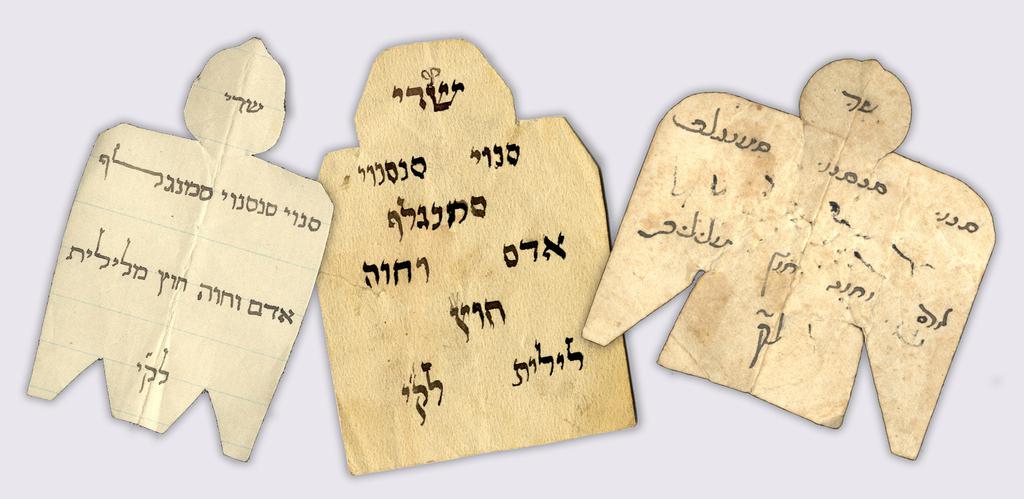
~Three amulets from the family of Rabbi Solomon Maimon, perhaps written by his father, Rabbi Avraham Maimon. Unknown if amulets were written in Tekirdag (Greece) or Seattle (US). Date: Before 1930.
~ “Maimon family kame'ot,” Exploring Sephardic Life Cycle Customs, accessed May 17, 2023, http://jewishstudies.washington.edu/omeka/items/show/113.
~ Eli Yassif, who studied the medieval stories of ben Sirah (or ben Sirach), claimed that the custom of writing amulets with the names of the angels dates back even earlier than the 8th century, its story intended to explain an existing custom. Note the alliteration of the S in the names of the three angels.
~ Sefer Razi'el HaMalach (The Book of the Angel Razi'el) is a book of Practical Kabbalah. Like several other kabbalistic texts, it comes in a number of versions and some of its parts seem to date from late antiquity. Some manuscript versions contain up to seven tractates. The printed version of Sefer Razi'el is divided into five books, some of it in the form of a mystical midrash on Creation. It features an elaborate angelology, magical uses of the zodiac, gematria, names of God, protective spells, and a method of writing magical healing amulets. It presents itself as the book of secrets that this angel gave to Adam.
Razi'el means "my secret is El" and Adam can be read as any human.
~ You can download the entire Sefer here:
https://download.hebrewbooks.org/downloadhandler.ashx?req=23968
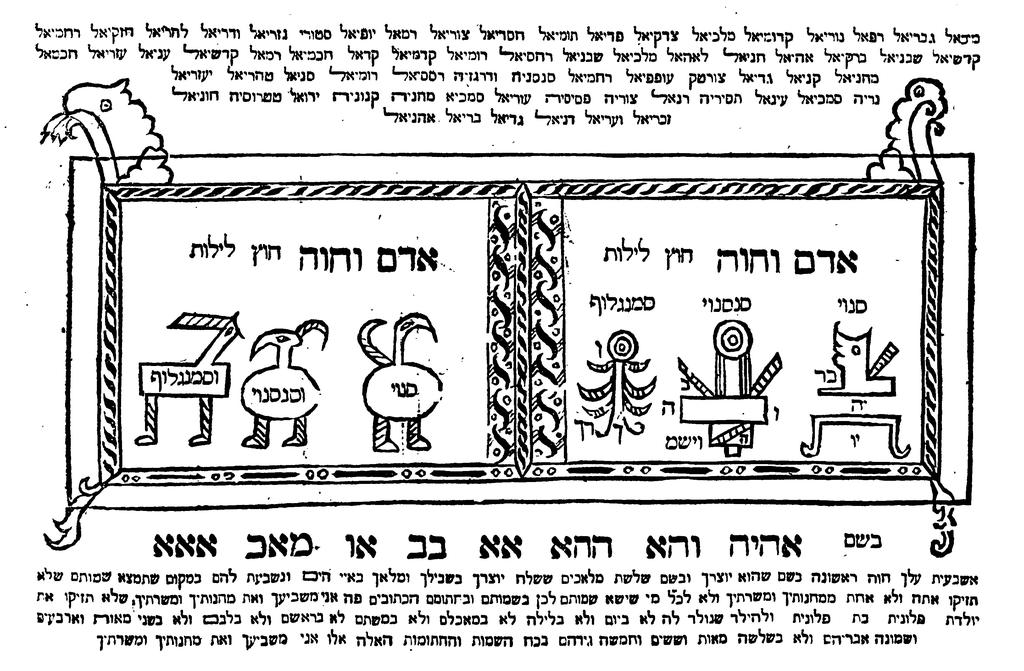
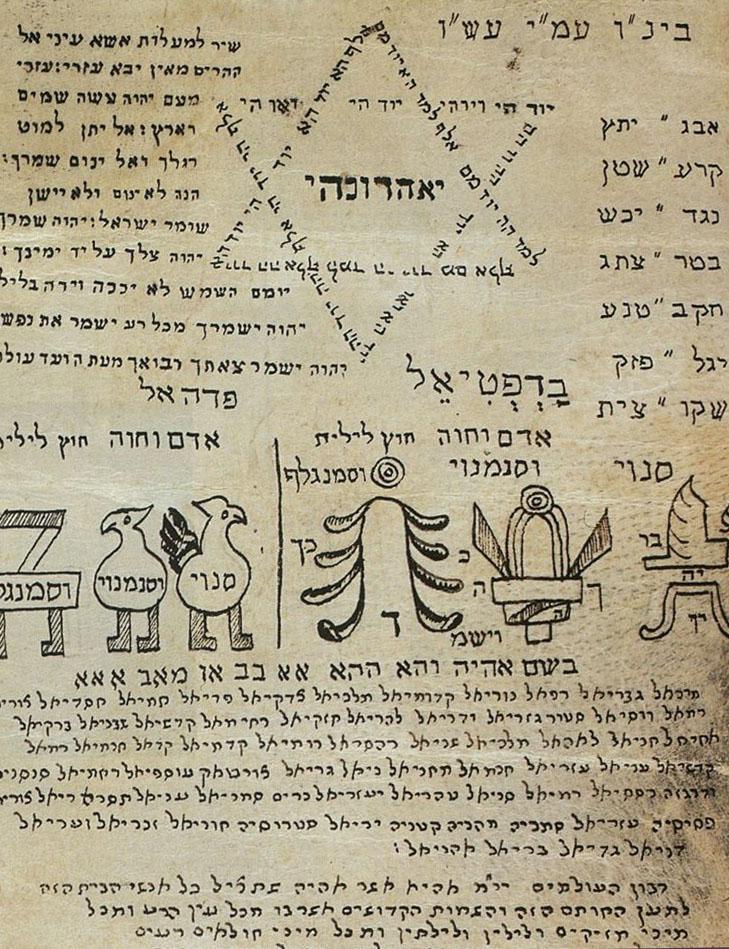
~ Amulet on parchment, of Middle Eastern origin, made in the early or mid-20th century, obviously an influence from Sefer Razi'el. From the National Library of Israel. See more at:
https://blog.nli.org.il/en/djm_sen-san-sem/
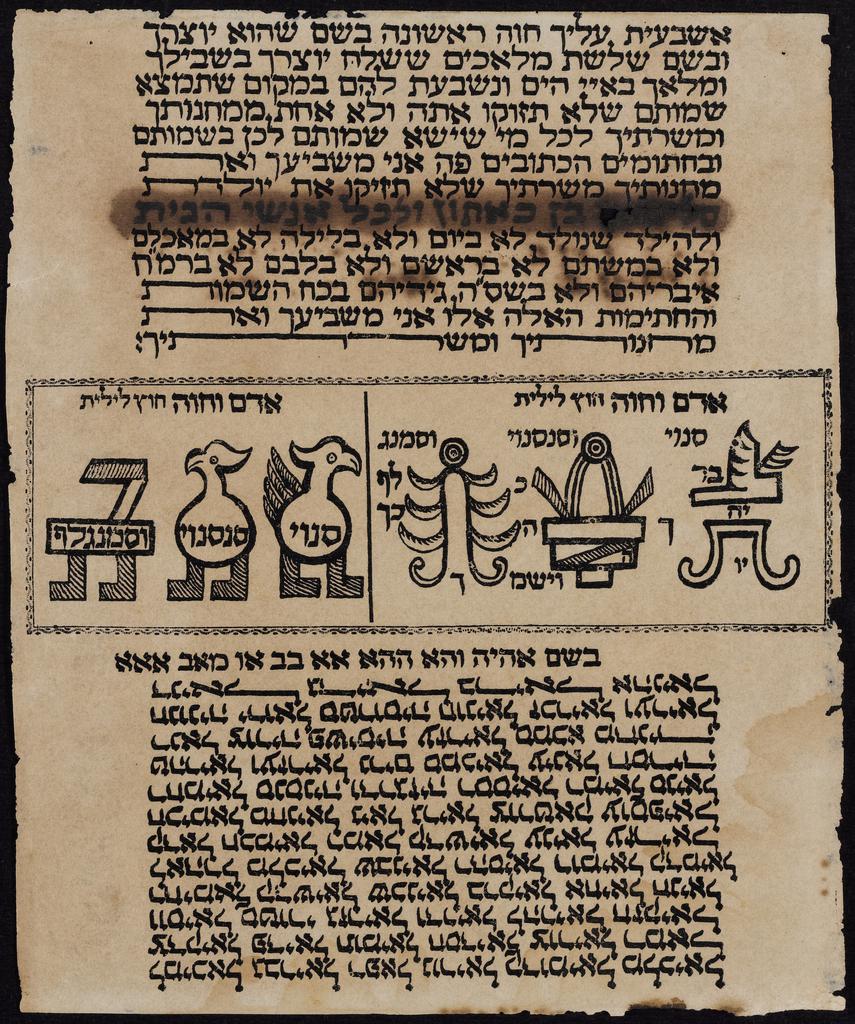
A printed(?) amulet for safeguarding a newborn child and the mother with the same incantation against Lilith of Sefer Razi'el, which calls her as "first eve". A blank space was left for the name of the mother, and in it the name of the amulet’s buyer was put: Sylman Ben Katton, for the protection of “all the people in his home.”
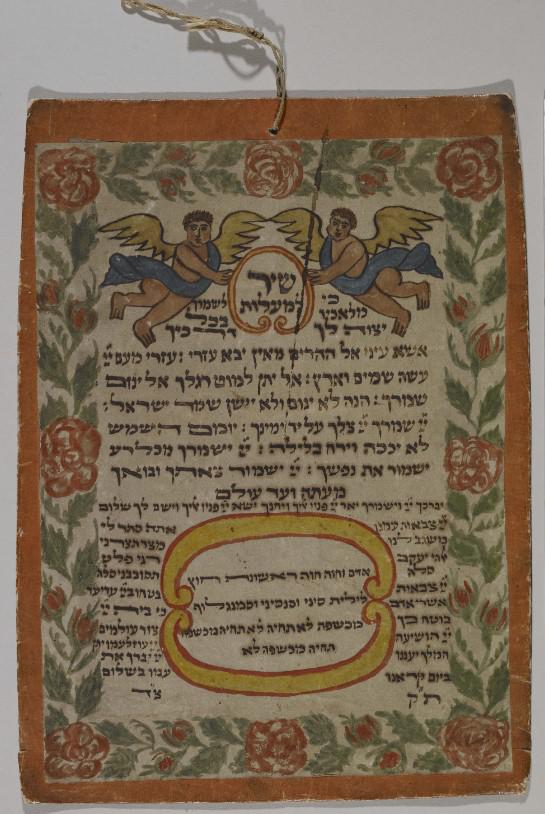
~ Amulet to be hung for the protection of a a mother and her newborn child; includes Psalm 121 and selected verses, with adjurations against demons and witchcraft. Germany 1833
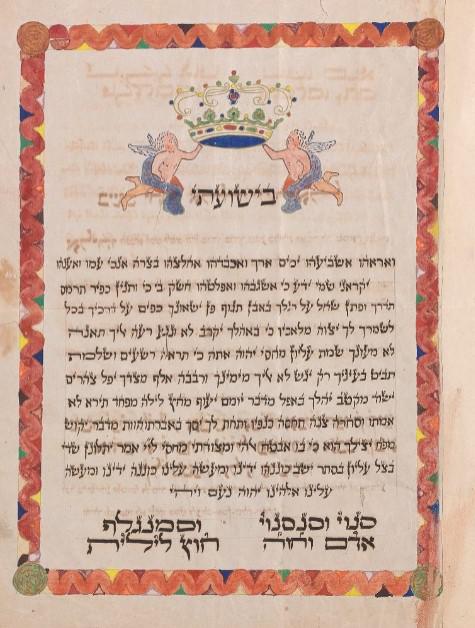
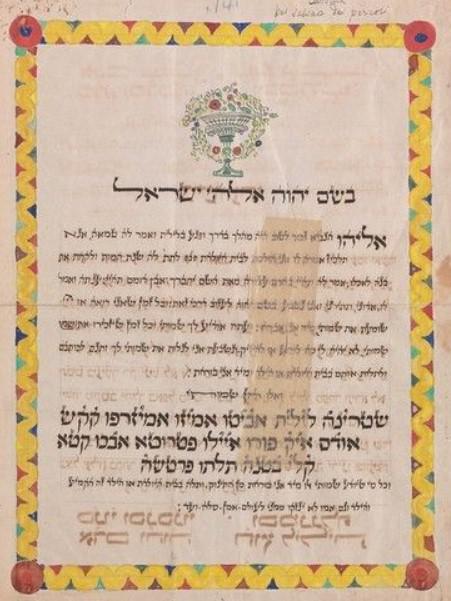
Two sides to the amulet:
On the orange side - two angels holding a crown, underneath is the Hebrew word for "in my salvation" and we read Psalm 91 plus the last verse of Ps 90 on the reverse.
On the bottom, in large block letters, are the names of the three angels connected to Lilith. On the other side of the leaf is another amulet, whose border is chiefly yellow. On the top there is a vase with flowers. Below the vase is the statement in Hebrew, "in the name of the God of Israel". The text continues with the tale of the prophet Elijah's encounter with the evil spirit Lilith and how he manages to vanquish her. This amulet is meant to protect a mother, who has just given birth, and her newborn child. At the bottom, in large block letters, are names for Lilith, and those who know them will not come to harm.
~ more detail: https://collections.library.yale.edu/catalog/31909764
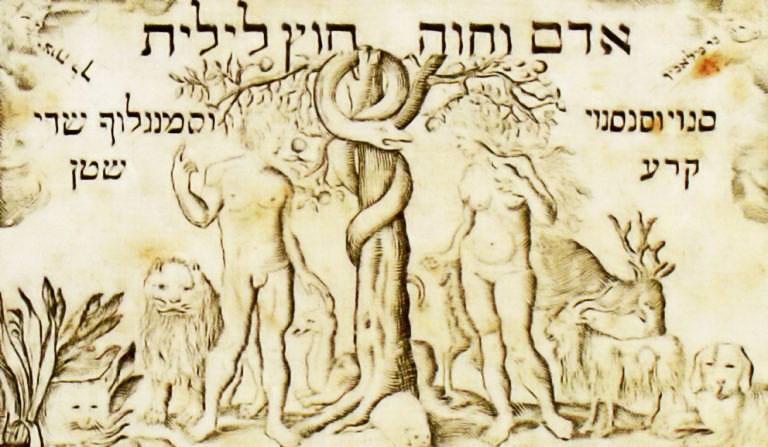
~ A birth amulet featuring an illustration of Adam and Eve. The names of the three angels as well as those of Lilith and Satan, also appear. This is the earliest Jewish amulet to appear in paper print. Amsterdam, circa 1700. Source: Angels and Demons edited by Filip Vukosavovic
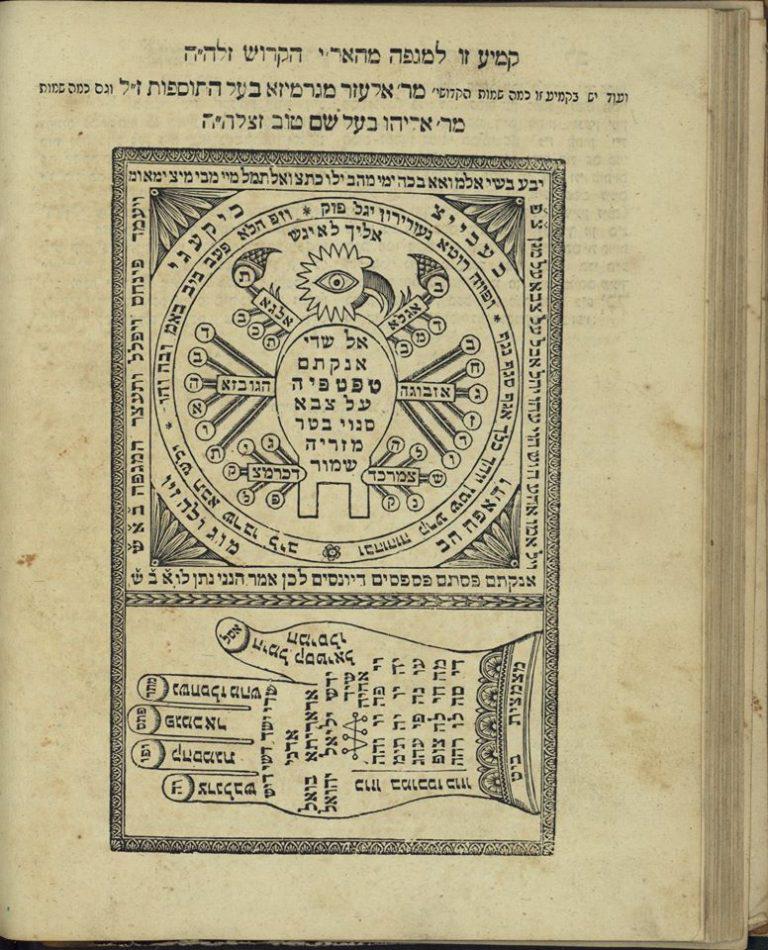
~ Found in a copy of the book Shaar HaYichudim (“The Gate of Unifications”) by the famous Safed Kabbalist Hayyim ben Joseph Vital. The Hebrew title appearing at the top reads “This amulet is for plague from the holy ARI…” (The holy ARI was Rabbi Isaac Luria, Vital’s teacher). The charm in fact consists of two different amulets joined together, one on top and one below. This edition was published in 1855 in the city of Lemberg, today’s Lviv, in western Ukraine.
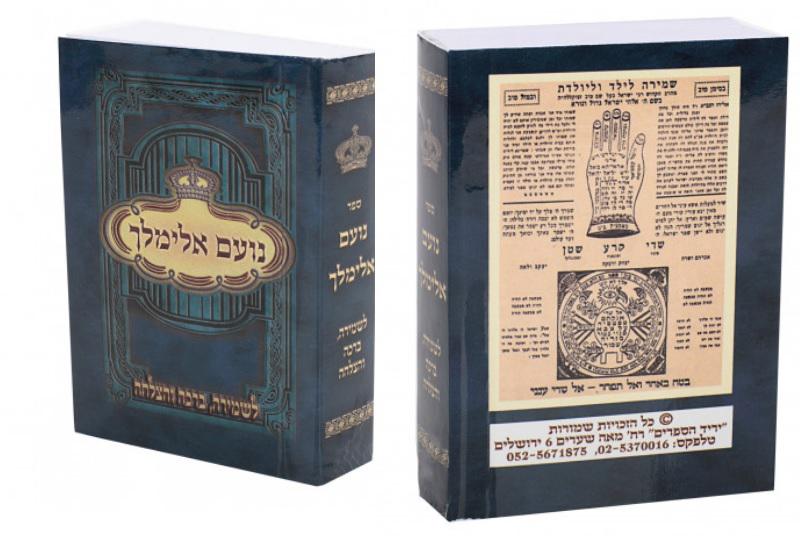
https://www.genazym.com/auction/613-genazym-high-holidays/lot-15-17/
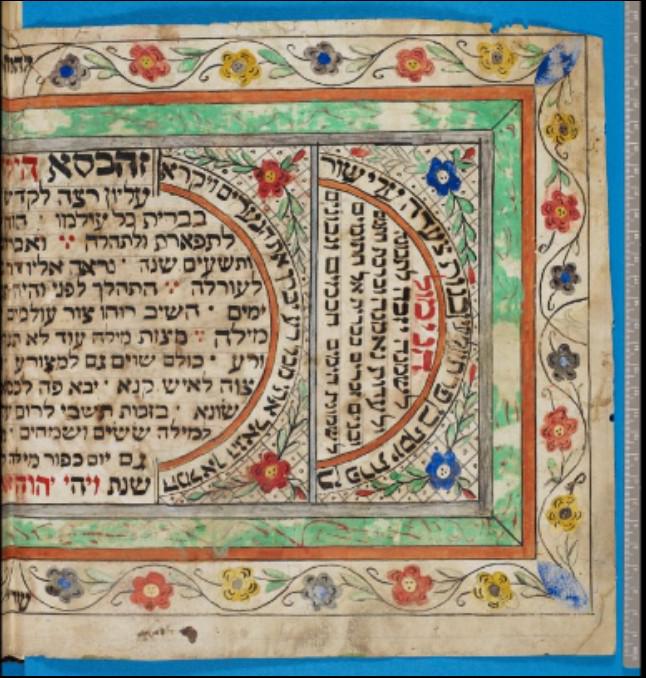

~ Amulet to protect the circumcised boy, dated 1819. British Library
https://www.bl.uk/manuscripts/FullDisplay.aspx?index=12&ref=Or_5561A

~ This amulet has the four worlds, and places Lilith and demons on the lower one. It affirms to protect from the evil eye and give success, and to aid difficult births, and to get pregnant, and against fever, and headaches, and pains in the chest, and against mazikin, and against the plague and the pestilence.
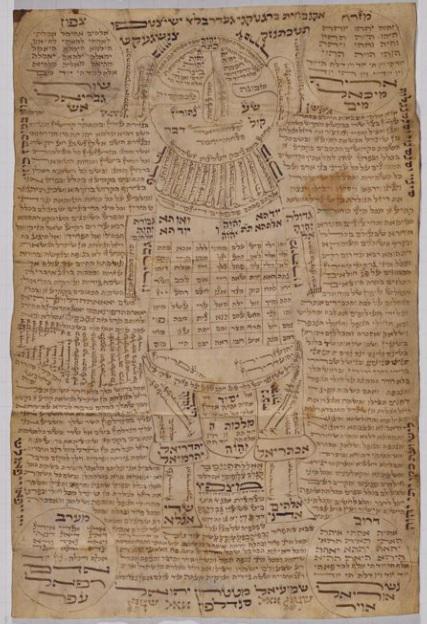
~ Here is another amulet that is actually a map of existence. Galicia (Poland/Ukraine), 18th-19th century. JTS collection
Best resolution: https://digitalcollections.jtsa.edu/islandora/object/jts%3A659338
"An effective amulet, tested and tried, against the evil eye and evil spirits, for grace, against imprisonment and the sword, for intelligence, to be able to instruct people in Torah, against all sorts of disease and reverses, and against loss of property: 'In the name of Shaddai, who created heaven and earth, and in the name of the angel Raphael, the memuneh in charge of this month, and by you, Smmel, Hngel, Vngsursh, Kndors, Ndmh, Kmiel, S‘ariel, Abrid, Gurid,memunim of the summer equinox, and by your Prince, Or‘anir, by the angel of the hour and the star, in the name of the Lord, God of Israel, who rests upon the Cherubs, the great, mighty, and awesome God, yhvh Ẓebaot is His name, and in Thy name, God of mercy, and by thy name, Adiriron, trustworthy healing-God, in whose hand are the heavenly and earthly households, and by the name yhvh, save me by this writing and by this amulet, written in the name of N son of N [mother's name]. Protect him in all his two hundred and forty-eight organs against imprisonment and against the two-edged sword. Help him, deliver him, save him, rescue him from evil men and evil speech, and from a harsh litigant, whether he be Jew or Gentile. Humble and bring low those who rise against him to do him evil by deed or by speech, by counsel or by thought. May all who seek his harm be overthrown, destroyed, humbled, afflicted, broken so that not a limb remains whole; may those who wish him ill be put to shame. Save him, deliver him from all sorcery, from all reverses, from poverty, from wicked men, from sudden death, from the evil effects of passion, from every sort of tribulation and disease. Grant him grace, and love, and mercy before the throne of God, and before all beings who behold him. Let the fear of him rest upon all creatures, as the mighty lion dreads the mightier mafgi‘a [cf. Shab. 77b]. I conjure N, son of N, in the name of Uriron and Adriron (sic) . Praised be the Lord forever. Amen and Amen.'"
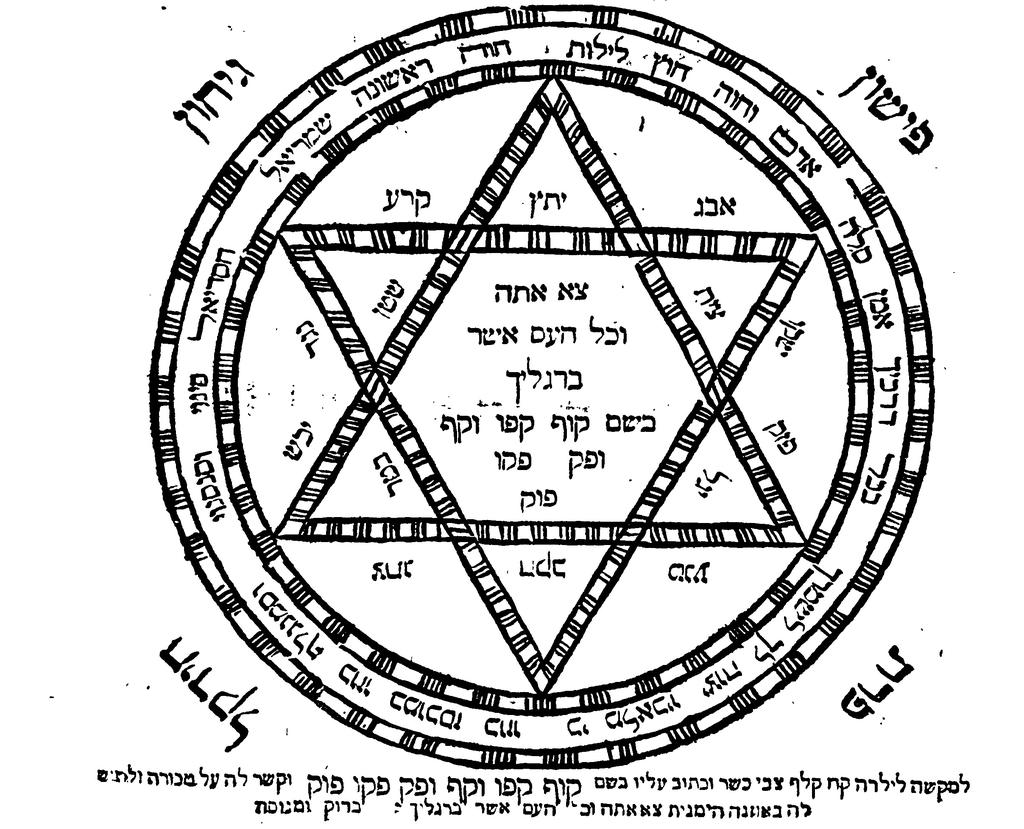
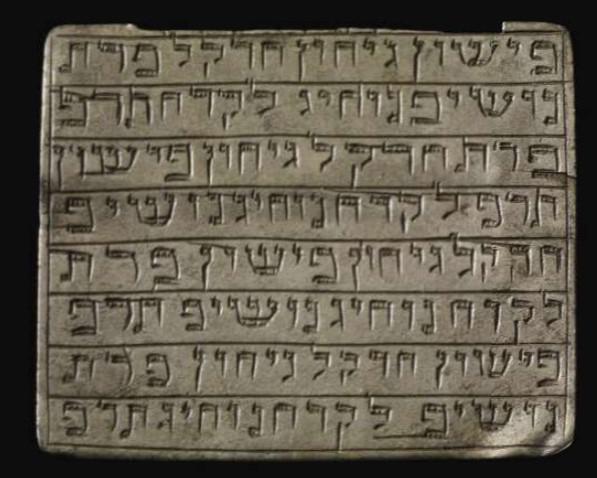
The inscription refers to the four rivers of the Garden of Eden.
The names of the rivers, Pishon, Gihon, Chidekel and Perat, are named on the first line. These names then snake round in reverse from left to right on the next line, and then again from right to left in a different order on the third line, then in reverse on the fourth, etc, down to the last…
~ https://www.britishmuseum.org/collection/object/H_1867-0709-5
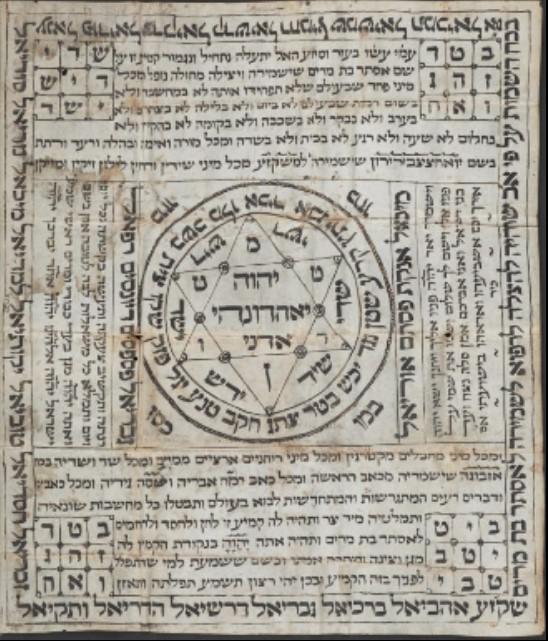
~ Amulet for the protection of Esther bat Miriam against "the sickness of falling and against any types of fear in the world, in the thoughts or in form, day and night, midday, evening or morning, at waking time or going to sleep, awake or in dreams, be it for an hour or a moment, at home or in the field, and against any fear and terror and panic and spasms in the name יאוחצצבירירון to guard her for משקז"ע against all demons and spirits of liliths, zikin and mazikin"
With Magen David in the center.
Note transposition of the letter shin, dalet and yod, as well as the presence of the 22-lettered name of God and the four angels Michael, Uriel, Gavriel and Raphael. The Tetagramaton and its combination with the Name אדני is inside, each triangle of the Magen David has a letter from the angelic name Metatron.
The text continues: "against a demon and a demoness,
In the margins "בכח השמות על פי שתהיה להצלה לרפוא לשמירה לאסתר בת מרים ...", followed by numerous names of angels. Upper paragraph "עמ"י עש"ו בעזר ובסיוע האל יתעלה נתחיל ונגמור קמיע זו על שם אסתר בת מרים שישמירה ויצילה מחולה נופל ומכל מיני פחד שבעולם שלא תפחידו אותה לא במחשבה ולא בשום דמות שבעולם לא ביום ולא בלילה לא בצהרים ולא בערב לא בבקר ולא בשכבה ולא בקומה ... בשם יואחצצבירירון שישמירה למשקז"ע מכל מיני שידין ורוחין ...".
The paragraph on the right side contains the name of scribe(?) Abraham "ואני אברהם".
Source: https://www.bl.uk/manuscripts/FullDisplay.aspx?ref=Or_16206
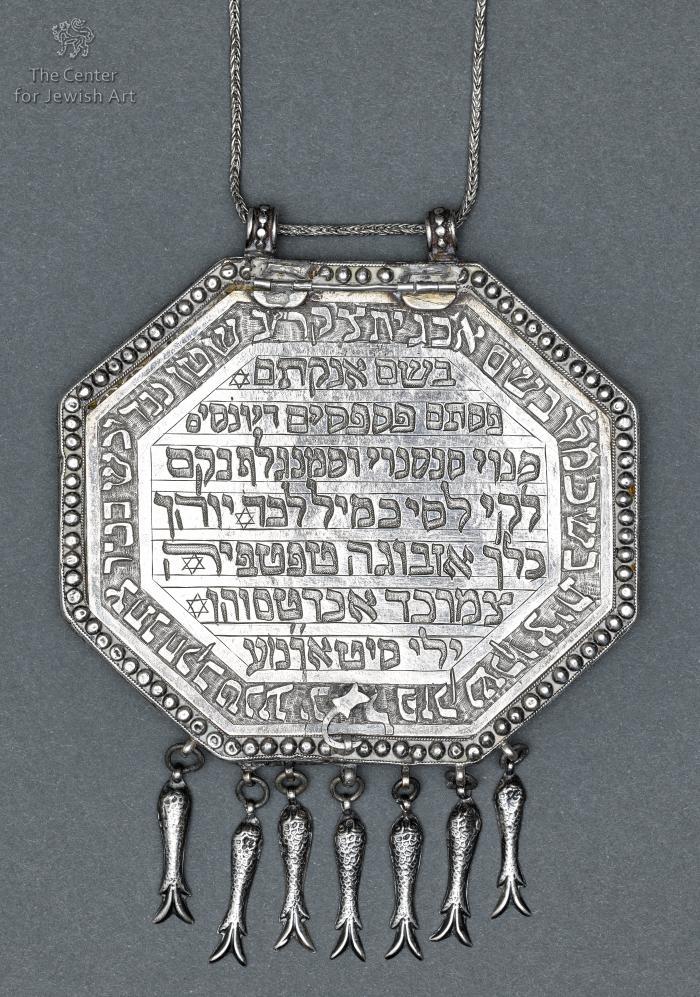
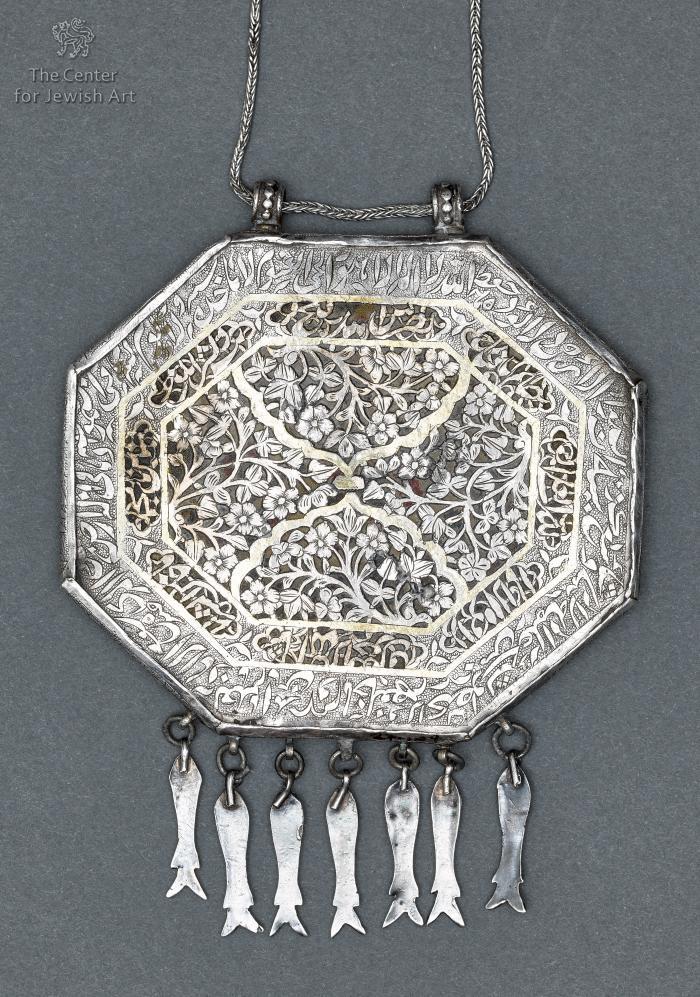
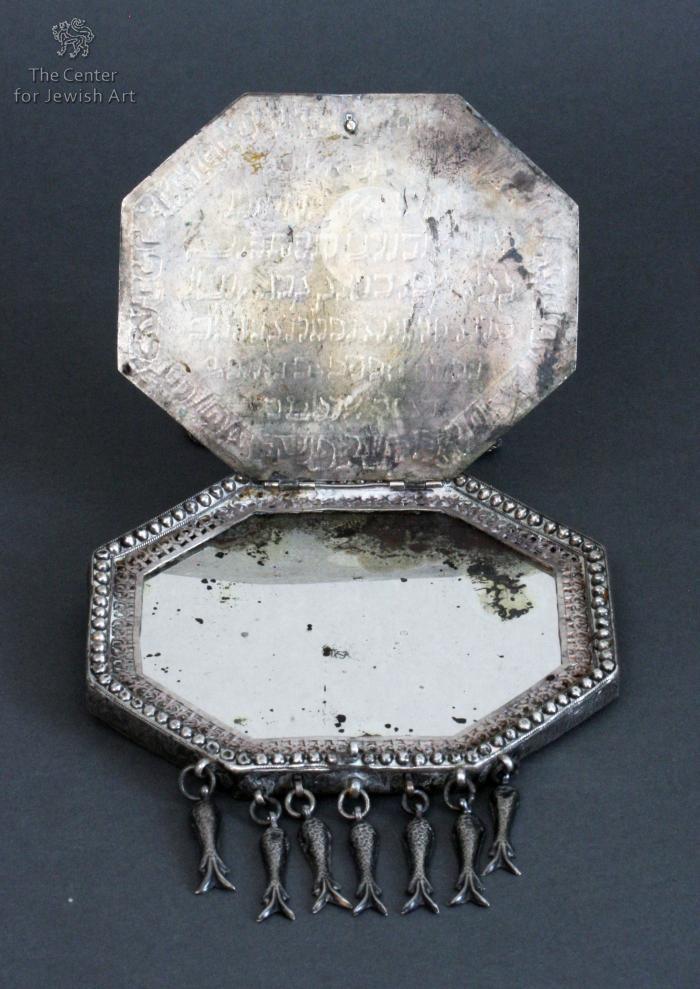
The mirror-case type amulet is considered to be for a bride. There are several such examples extant, including another one in the Gross Family Collection, 027.001.083. This example is fitted with hanging fish, a fertility symbol, and carries a Hebrew inscription. On the front, around the perimeter, is inscribed the 42-letter name of God. In the center are: the 22-letter name of God, the names of Sanoi, Sansanoi and Smangalaf (protection of mother and child after birth), the abbreviations for Genesis 49:18 (for protection), for Psalms 91:11 (call for help), four different names (formed by permutations of letters from biblical verses), the first three words of the 72-letter name of God (formed using Exodus 14:19-21) and another abbreviation representing Psalms 38:12. This inscribed silver cover opens to reveal the mirror.
(ה) חובר חבר זהו שעל ידי לחש מקבץ חיות או נחשים ועקרבים יתושים ופרעושים:
(ו) מי שנשכו עקרב מותר ללחוש עליו ואפילו בשבת ואע"פ שאין הדבר מועיל כלום הואיל ומסוכן הוא התירו כדי שלא תטרף דעתו עליו:
(ז) מי שרודפים אחריו נחש ועקרב מותר לחבר כדי שלא יזיקוהו:
(ח) הלוחש על המכה או על החולה ורוקק ואחר כך קורא פסוק מן התורה אין לו חלק לעוה"ב ואם אינו רוקק איסורא מיהא איכא ואם יש בו סכנת נפשות הכל מותר: הגה וי"א דכל זה אינו אסור אלא כשקורא הפסוק בלשון הקדש אבל בלשון לעז לא (רש"י בשם רבו) ומיהו ברוקק טוב ליזהר בכל ענין בפרט אם מזכירין השם שאין לו חלק לעוה"ב (כן משמע מהטור לדעת ר"י):
(ט) תינוק שנפגע אין קורין עליו פסוק ואין מניחין עליו ס"ת:
(י) הבריא מותר לקרות פסוקים להגן עליו מהמזיקין:
(יא) למדוד האזור וללחוש עליו מותר ואפי' בשבת: הגה ועיין בא"ח סימן ש"ו וה"ה שאר לחשים ועיין בא"ח סי' ש"א איזה לחש וקמיע אסור:
(יב) מותר להתרפאות בקמיע אפי' יש בהם שמות וכן מותר לישא קמיעין שיש בהם פסוקי' ודוקא להגן שלא יחלה אבל לא להתרפאות בהם מי שיש לו מכה או חולי אבל לכתוב פסוקים בקמיעים אסור:
(5) "A spell-caster" (Deuteronomy 18:11) is someone who gathers animals or snakes or scorpions or mosquitoes or flies with whispers.
(6) Someone who has been bitten by a scorpion: it is permitted to whisper spells for them, even on Shabbat, and even though this thing is completely ineffective, because the person is in danger, they permitted it in order that their mind should not be torn apart (made insane).
(7) Someone who is being chased by a snake or scorpion: it is permitted to whisper spells in order to prevent them from harming one.
(8) Someone who whispers spells over a wound, or over someone ill, and then spits, and then reads a verse from the Torah: this person has no portion in the World to Come. But even if they do not spit, however, it is still prohibited. But if there is danger to life, then anything is permitted. [Comment of Rema: And some say that all this is only forbidden when one reads the verse in Hebrew but not in a foreign language (Rashi citing his teacher). However, it is best to be careful about spitting, as much as possible, especially if one is reciting the Divine name, as this person has no portion in the World to Come (as is indicated by the Tur in the R"I's opinion).]
(9) A child who has been wounded: we may not recite verses over them, or place a Sefer Torah upon them.
(10) A healthy person: it is permitted to recite verses over them, in order to protect them from the damaging forces [aka demons or evil spirits].
(11) To measure a belt (of a person who is ill) and to whisper spells over it is permitted, even on Shabbat. [Comment of Rema: And see OC 306, and the rule is the same for other whispered spells. And see OC 301 for which whispered spells and which amulets are forbidden.]
(12) It is permitted to by healed by an amulet, even if it has Divine Names inside. And it is similarly permitted to carry amulets that have verses inside. This is specifically for protection, not to become ill, but does not permit someone who has a wound or an illness to be healed by them. But it is forbidden to write verses in the amulets.
(א) באיזה כלים מותר לצאת בשבת ואיזה מהם אסורים. ובו נא סעיפים:
אין לרוץ בשבת אא"כ הוא לדבר מצוה כגון לבה"כ או כיוצא בו: הגה ואסור לפסוע יותר מאמה בפסיעה אחת אם אפשר לו בפחות [א"ז והגהות אשירי פרק מי שהוציאוהו]:
(1) 1. Articles Which One May Go Out [to the Public Domain] While Wearing and Those Which Are Forbidden [To Be Worn], 51 Seifim: One should not run on Shabbat unless it is to perform a mitzvah, such as running to the Shul, or something similar. RAMA: And it is forbidden to walk more than an amah in one step if one can take a smaller step. [Or Zaruah; Hagahos Ashiri]
(כד) יוצאים במיני עשבים שקושרין אותם בקשרים ותולין אותם לרפואה:
(כה) אין יוצאין בקמיע שאינו מומחה ואם הוא מומחה יוצאין בו לא שנא אתמחי גברא ולא קמיע כגון שכתב לחש אחד בשלש אגרות ורפאו שלשתם שלש בני אדם שאיתמחי גברא לאותו לחש בכל פעם שיכתבנו אבל לא לשאר לחשים וגם אין הקמיע מומחה אם יכתבנו אחר לא שנא איתמחי קמיע ולא גברא כגון שכתב לחש אחד באגרת וריפא בו ג' פעמים שאותה אגרת מומחה לכל אדם וכ"ש אי איתמחי גברא וקמיע כגון שכתב לחש אחד בג' אגרות וכל אחד הועילה לג' אנשים או לאדם אחד ג' פעמים איתמחי גברא ללחש זה בכל אגרת שיכתבנו ואתמחו אגרות הללו לכל אדם: הגה ודוקא שבאו שתי המחאות ביחד אבל אם איתמחי גברא תחיל' ואח"כ עשה קמיע ורפא שלשה פעמים לא תלינן בהמחאת הקמיע רק בהמחאת הגברא שכבר איתחזק [הגהות אשירי וכן משמע מתוס' מהביאור שכ' ב"י]: אבל אם כתב שלשה קמעים לאדם אחד ורפאו שלשה פעמים לא איתמחי לא גברא ולא קמיע ומותר לצאת בקמיע מומחה ל"ש היא של כתב או של עיקרים בין בחולה שיש בו סכנה בין בחולה שאין בו סכנה ולא שנכפה כבר ותולהו לרפואה אלא אפי' לא אחזו החולי אלא שהוא ממשפחת נכפין ותולהו שלא יאחזנו שרי וקושרו ומתירו ברה"ר ובלבד שלא יקשרנו בשיר או בטבעת ויצא בו לרשות הרבים שאז יאמרו שיוצא בו לשם תכשיט וזה אסור דלאו תכשיט הוא:
(כו) נאמן לומר הרופא על עצמו שהוא מומחה:
(כז) יוצאין בביצת החרגול ובשן של שועל ובמסמר הצלוב בין בחול בין בשבת ואין בו משום דרכי האמורי וכן בכל דבר שהוא משום רפואה אבל אם עושה מעשה ואין ניכר בו משום רפואה אסור משום דרכי האמורי אבל כל לחש מותר ולא אסור אלא באותם שבדקו ואינם מועלים ויש מי שחושש בכל קמיע שאינה מומחה משום דרכי האמורי:
(כח) מי שיש לו מכה בפיסת רגלו וקושר עליה מטבע להגין שלא ינגף ברגליו וגם הוא מרפא מותר לצאת בו:
(24) 24. One may go out [into the public domain on Shabbat] wearing herbs that are tied in knots and hung from one’s neck for therapeutic purposes.
(25) 25. One may not go out wearing an amulet that is not reliable. If it is reliable, he may go out with it. It doesn't matter if the man who wrote it is a proven expert or if the amulet is proven to be effective. For example, when he has written one text on three [separate] scripts and [with them] healed three people, he is considered an expert for that text each time he writes it, but is not considered an expert for other texts. Also, the amulet is not proven to be effective if it is written afterwards - it makes not difference if the author is an expert or if it is effective; for example, when one writes one text in a script and heals someone three times - there is no proof it is effective for all people. All the more so, if the author is an expert and it is effective - for example where one writes one text in three scripts and each one heals three separate people, or one person three times. He is considered an expert regarding this text in any script in which he writes it and the script is considered effective for all people. RAMA: And specifically if [the healer and the amulet] were both deemed expert and reliable at the same time. However, if the healer was deemed an expert first and afterwards made an amulet which healed three times, we do not give this amulet the designation [of both a healer and a reliable amulet], rather only the designation of the author's expertise, for it was already strengthened [Hagahos Ashiri and such was heard from Tosefos from the Biur that the Beis Yosef wrote]. However, if one wrote three amulets for one person and he was healed three times we do not designate it as being expertly written or effective, or even as an amulet. And it is permitted to go out with an expertly written amulet - and it makes no difference if it is written or just the essence [was written], whether for a sick person who is in danger or a sick person who is not in danger, or an epileptic and it was hung for therapeutic purposes. [Indeed,] even a person who has not fallen ill at all is permitted to go out (to the public domain on Shabbos [wearing such an amulet]) if he is from a family in which epilepsy or other similar illnesses run and he is concerned and hangs an amulet [from his neck as a precaution against] falling sick because of his family’s [predisposition to this] illness. This is provided that it is not tied with a tie or a ring and he goes out to the public domain; for then they will say that he goes out to show off an ornament. And this is forbidden because it is not an ornament.
(26) 26. It goes without saying that one who heals himself is an expert.
(27) 27. It is permitted to go out on Shabbos with: a) the egg of a species of grasshopper known as a chargol (hung over one’s ear to relieve an earache); b) the tooth of a live fox (hung on a person who sleeps excessively); c) the tooth of a dead fox (hung on someone suffering from insomnia); and/or d) a nail from a wooden beam on which someone was crucified (used to heal a swelling that stems from a blow from [an] iron [implement]), whether it is during the week or during Shabbat. Doing so is not considered as following the ways of the Amorites. So too, with anything that is used for healing. However, if one makes something that is not recognized as something used for healing, it is forbidden because this is considered as following the ways of the Amorites. However, any incantation is permitted and not forbidden except for those that are checked and do not heal. And there are those who worry for this regarding every amulet that is not effective because it is following the ways of the Amorites.
(28) 28. Anyone who has a wound on his foot (that is healed by) tying to it a coin may go out [to the public domain] with [the coin bound to his foot on Shabbos]. Since it is a healing agent, it is considered as an ornament (and as a garment) for him.
(ד) מנהג פשוט שכותבים על המזוזה מבחוץ כנגד הריוח שבין פרשה לפרשה שדי ואין בזה הפסד לפי שהוא מבחוץ אבל אלו שכותבין מבפנים שמות המלאכים או שמות קדושים או פסוק או חותמות הרי הן בכלל מי שאין להם חלק לעולם הבא שאלו הטפשים לא די להם שבטלו המצוה אלא שעשו מצוה גדולה שהיא יחוד השם של הקדוש ברוך הוא ואהבתו ועבודתו כאילו הוא קמיע של הניית עצמן כמו שעלה על לבם הסכל שזהו דבר המהנה בהבלי העולם.
(4) The simple practice is that we write on the *mezuza* on the outside, opposite the space between one paragraph and another, "*Shaddai*." And there is no loss from this, since it is on the outside. However, those who write on the inside the names of the angels, holy names, a verse, or signatures, these are among those who have no portion in the world to come. For these simpletons, it is not enough for them that they invalidated the commandment, but they treated a great commadment - the unifications of the name of the Holy One, blessed be He, with His love, and His service - as if it is an amulet for their own benefit, as it arose on their hearts the foolish idea that this is something that will provide benefit with respect to the vanities of the world.
(ב) ויתן לו את אסנת. וא"ת יוסף שהי' מלך איך נשא בת הדיוט. ונ"ל לפי שמתחלה הי' יוסף עבד לפוטיפר אמר בלבו אם לא אעשה רצונו לישא בתו יזלזלני וילשין אותי שהייתי עבדו אשאנה ויכבדני. ועוד י"ל שנשאה מפני שהית' מזרע יעקב כדפי' רש"י בפ' וישלח דבת דינה הית' משכם ותלה לה יעקב אבינו קמיע בצוארה והשליכה והובאה למצרים ע"י נס כדפרישית וגדלה פוטיפר בביתו ולכך נקראת על שמו כמו שמצינו גבי משה רבינו ע"ה אלה בני בתיה וגו'. וכשעבר יוסף בכל ארץ מצרים יצאו כל הנשים לראות יפיו של יוסף כדכתיב בנות צעדה עלי שור וכל אחת זורקת לו חפץ או תכשיט וזו לא היה לה מה לזרוק וזרקה לו הקמיע שהיה בצוארה ועיין בו וראה שהיא מזרעו של יעקב ונשאה:
(2) ויתן לו את אסנת, “he (Pharaoh) gave him Ossnat (as a wife) If you were to ask why Joseph who was Royalty would marry the daughter of a commoner, remember that Joseph had previously been a slave in the household of Potiphar. He therefore reasoned that if he were to refuse to marry Ossnat, the daughter of his former master, the latter would spread the word that Joseph was really a slave and that he had no business to have risen to such an exalted position. On the other hand, if he would agree and marry this woman, his former master would honour him henceforth, being proud that through this marriage he himself now had connections to the highest social circles in Egypt. There is an additional reason why he agreed to marry this woman, as she was actually a descendant of Yaakov, as Rashi has explained on Genesis, portion Vayishlach, quoting Pirke de rabbi Eliezer, chapter 38, according to which she was the daughter of Dinah from her rape by Sh’chem. According to that chapter, the angel Michael had transported that infant to Egypt where she had been adopted by Potiphar. This is why the Torah calls her the daughter of Potiphar. We find that Moses similarly was adopted by the daughter of Pharaoh, and that in Chronicles I 4,18 Calev is reported as marrying (also) Bityah-the daughter of Pharaoh, who had at the time adopted Moses. When Joseph was paraded throughout Egypt (Genesis 49,23,) and according to the Torah, all the young ladies threw flowers or jewelry at him, when Ossnat, did not have anything to throw, she threw her amulet, which she had worn around her neck at all times, at him. When Joseph looked at the inscription on it, he realised that the girl wearing it was descended from Yaakov, and he went ahead and married her.




